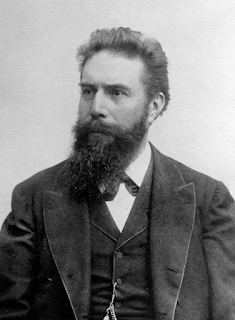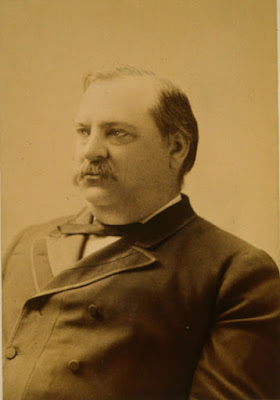DEATH AND MEDICINE: FORENSIC SCIENCE IN NEW YORK
Before 1918, if a corpse turned up in a New York City apartment, an elected coroner, with physicians as advisors, determined the cause of death. But the coroner rarely carried out autopsies or investigations. The system was so inefficient and corrupt that the NY Governor ordered an inquiry. A summary of the inquiry included phrases such as, “…infanticide and skillful poisoning can be carried on almost with impunity” and “in criminal prosecutions the district attorney usually receives no adequate medical data whatever.” Coroners had no training and many had previously been undertakers, politicians, saloon keepers, and plumbers. The physicians appointed to help the coroner had been “chiefly known for their political activity.”
New York State passed a law in 1915 mandating that a medical examiner replace the coroner in New York City. Tammany-connected N.Y. Mayor Hylan was forced to choose an experienced physician for the job and chose Dr. Charles Norris, a pathologist and director of laboratories at Bellevue Hospital.
Charles Norris, from a wealthy New Jersey family, graduated from the College of Physicians and Surgeons (P&S), then studied anatomy and pathology in Europe, including time with Virchow. He spent eighteen months in Vienna absorbing the teachings of Eduard von Hofmann. Hofmann was the first professor of forensic medicine at 
Eduard von Hofmann (Wikipedia)
the University of Vienna, appointed in 1875 after the retirement of Carl Rokitansky (who had kept forensic medicine in his pathology department). Hofmann brought chemistry, experimental physiology, and microscopic work, including bacteriology, into the specialty. Norris, on his return, worked in bacteriology at P&S and later accepted a position as director of laboratories at Bellevue Hospital. Bellevue’s City Morgue was joined to the pathology department, whose new building boasted modern laboratories. The enlarged morgue was said to be the largest in the world.
Norris, with his training, was uniquely suited for the medical examiner's job. Though he was not the first American medical examiner (that honor goes to Dr. George Magrath, appointed medical examiner in Boston in 1877), Norris’ office became the most scientific and influential one.
To investigate suspicious deaths, a knowledge of poisons and toxins was essential. Norris brought in Alexander Gettler, a young chemist (not an MD) and an instructor at NYU’s medical school. Unlike Norris, who was well-born and over six feet tall, Gettler was the son of a poor Hungarian immigrant and diminutive in size. He was a brilliant chemist and became America’s first professional toxicologist. He studied poisons, using samples from a local butcher shop to determine efficient ways to measure the levels of poisons in tissues and blood. With cyanide, he elaborated ways to quantify mere traces and found that decomposing human tissues did not produce cyanide de novo, as some defense attorneys asserted, and was not degraded after death. Ballistics, bullet trajectories, and many other subjects were explored. Before long the findings of the two men in murder and suicide cases made headlines.
 |
| Medical Examiner's Lab. Norris on left, Gettler on right (Wikipedia) |
Life was busy at the morgue. A bomb explosion on Wall Street, accidents on the new subways, suicides from the stock market crash, gangster wars during Prohibition, and other problems provided numerous bodies for investigation. Norris also aimed at broader issues. Automobile sales exploded in the early 1920s, and so did deaths from auto accidents. In 1920, 692 New Yorkers died in auto accidents, leading to a law in 1922 requiring a driver to be licensed. It did not help – in 1925 the number of deaths was 1272. By this time tetraethyl lead (TEL) had been added to gasoline to prevent engine knocking. In 1924 workers in a Standard Oil plant began suffering from psychiatric disorders and convulsions and five employees died. New Jersey officials called Norris for help. In four autopsied cases he and Gettler found high levels of lead in all tissues, including the brain. In fact, TEL had a particular affinity for the brain. New York City, New Jersey, and a few other cities banned TEL. But a conference held by the Surgeon General in 1925, influenced by
industry, opined that there was no real evidence that TEL was harmful, though further study was recommended. Only in 1976 did the phaseout of TEL begin, finalized in 1996.
Alexander Gettler (Wikipedia)
Norris took on Prohibition as well. He and Gettler predicted that deaths and blindness would increase with Prohibition, and they were right. The toll was heavy. To deter drinking, industrial alcohol was poisoned, most commonly with methyl (wood) alcohol, a substance degraded in the body to formaldehyde and formic acid. Illegal distilling companies simply hired chemists to remove or lower the wood alcohol content from supplies stolen for resale. Congress responded by authorizing an increase in methyl alcohol content or introducing new poisons, including benzene and mercuric salts, into industrial alcohol. Alcohol-related deaths and blindness increased, mainly among the poor who could not afford the purer stuff. Norris, seeing the tragic results firsthand, was exasperated and cried out, “…the United States Government must be charged with the moral responsibility for the deaths that poisoned liquor causes…” Congress did not respond, and Prohibition was not repealed until 1933.
Scene in Bellevue's Morgue, late 1800s. (Wikipedia)
Norris’ office was the origin of the specialty of forensic medicine in America. He and Gettler placed the investigation of poisonings, suicides, and criminal and accidental deaths on a scientific basis that became, over time, the norm throughout the nation. Medical examiners, many trained by Norris, replaced coroners in most cities and their work led to the formation of the American Academy of Forensic Sciences, certification in forensic pathology, and several journals.
And many a mystery writer has profited from their discoveries!
SOURCES:
Ewing, James. “Charles Norris, M.D.” (obituary). 1935; Bull N Y Acad Med 11(10): 633-6.
Oshinsky, David. Bellevue. 2016; Doubleday. Chapter 14.
Blum, Deborah. The Poisoner’s Handbook. 2010; Penguin Books
Bucholtz, Ann. “History of Death Investigation” 2015; Forensic Sci Sem 5(1): 15-19.
Eckert, William. “Medicolegal Investigation in New York City: History and activities 1918-1978”
1983; Amer J Forensic Medicine and Pathology 4(1): 33-54.























